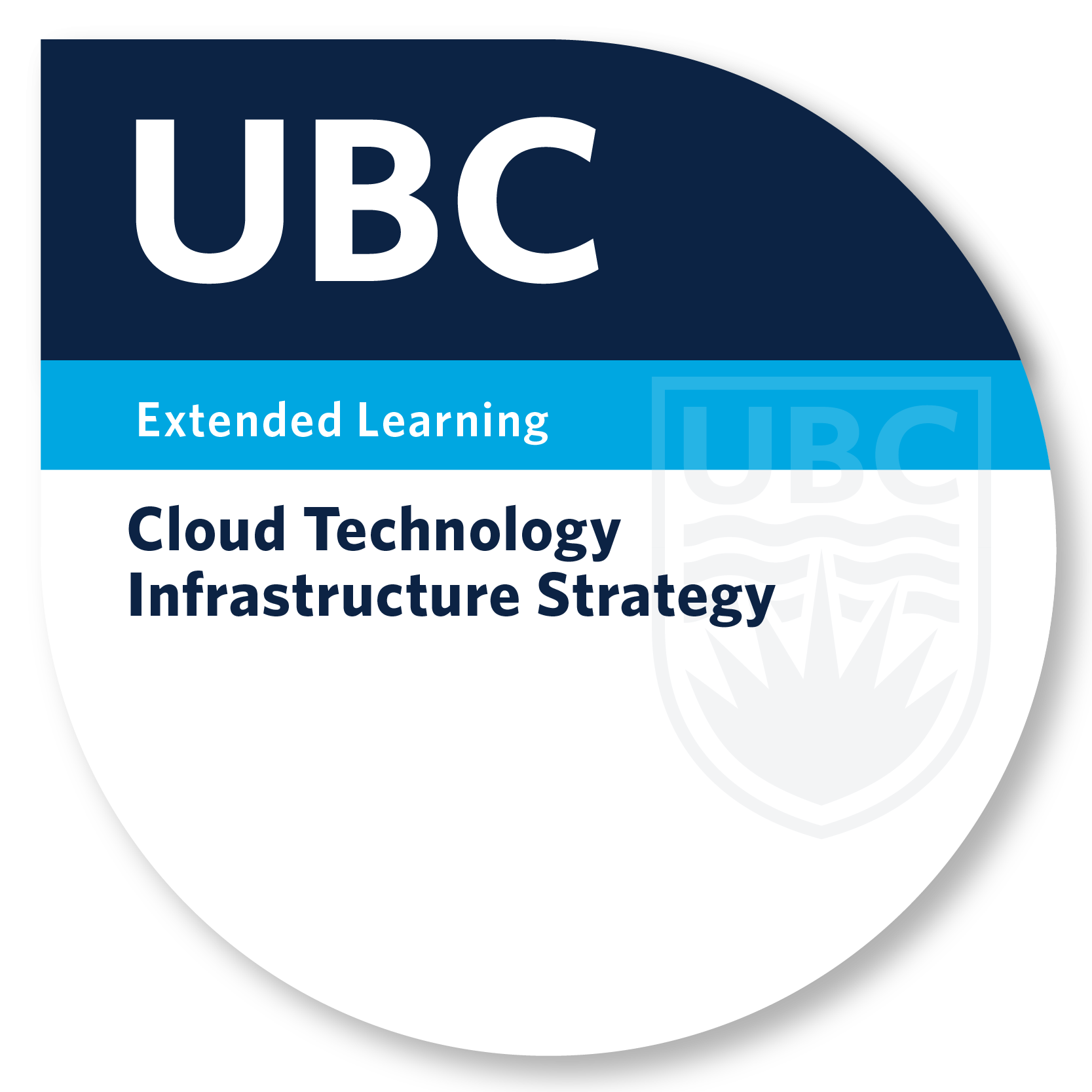- Online
- $950
This is the second of two courses in the UBC Micro-certificate in Cloud Transformation and Technology Infrastructure Strategy.
You don’t need to be an IT expert to ensure the success of cloud initiatives, but understanding the technical fundamentals can help ensure you can successfully transform and pivot your organization to the cloud.
This technical and business-oriented course provides a fundamental understanding of core concepts around cloud versus on-site technologies, focusing on servers, networks, storage and application patterns.
Come away from the course knowing what you need to consider when choosing and deploying cloud technology infrastructure, how to create a secure operating environment for your organization, and strategies to bridge the needs of product and technical stakeholders in your organization.
Technical and coding skills are not required to take this course, and coding is not covered. However, this course offers optional technical deep dives for learners with an information technology background. Familiarity with management information systems and business applications is an asset.
Course outline
Week 1: Build a computer platform. Understand the major compute options and how they impact application performance. Analyze use cases to optimize operating systems, software and virtualization choices. Learn mechanical sympathy and how choices impact performance.
Week 2: Design a secure networking environment. Learn basic networking concepts and constraints. Create a secure network to operate and manage applications on common shared services.
Week 3: Choose a data storage technology. Explore popular data storage platforms and the key trade-offs of data storage technologies. Review application requirements and align to optimal technologies.
Week 4: Leverage secure application patterns. Design and analyze common application deployment and management patterns to secure the application operating environment.
How am I assessed?
You’re assessed on successfully completing weekly activities, including your contributions to discussion posts and applied case study projects (based on real-life scenarios). These are marked on a matrix using a scoring guide, and your instructor provides you informal feedback in the live sessions.
While you’re not assessed on your attendance of the live sessions, we encourage you to attend these classes so you don’t miss the opportunity to learn and interact with your instructor and other participants. All sessions are recorded in case you miss one.
Expected effort
Expect to spend approximately 5-7 hours a week completing all learning activities, including attending the live online sessions.
Technology requirements
To take this course, you’ll need access to:
- an email account
- a computer, laptop or a tablet
- the latest version of a web browser (or previous major version release)
- a reliable internet connection
- a video camera and microphone.
Course format
This 100% online program is instructor supported with real-time classes. Days and times for the live online sessions will be confirmed soon.
Outside of class time, you can access online materials at your own pace. Each week, review readings and videos, and apply your learning in exercises and case studies. Contribute to a discussion board and connect with other students.
Please note you can log in to your course for up to eight weeks after the course ends. You'll no longer be able to access course materials after this time.
One business day before the course start date, we'll email you step-by-step instructions for accessing your course.
